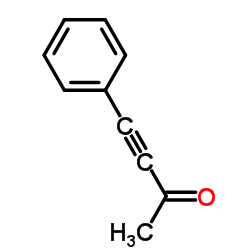| 结构式 | 名称/CAS号 | 全部文献 |
|---|---|---|
 |
4-苯基-3-丁炔-2-酮
CAS:1817-57-8 |
| 结构式 | 名称/CAS号 | 全部文献 |
|---|---|---|
 |
4-苯基-3-丁炔-2-酮
CAS:1817-57-8 |